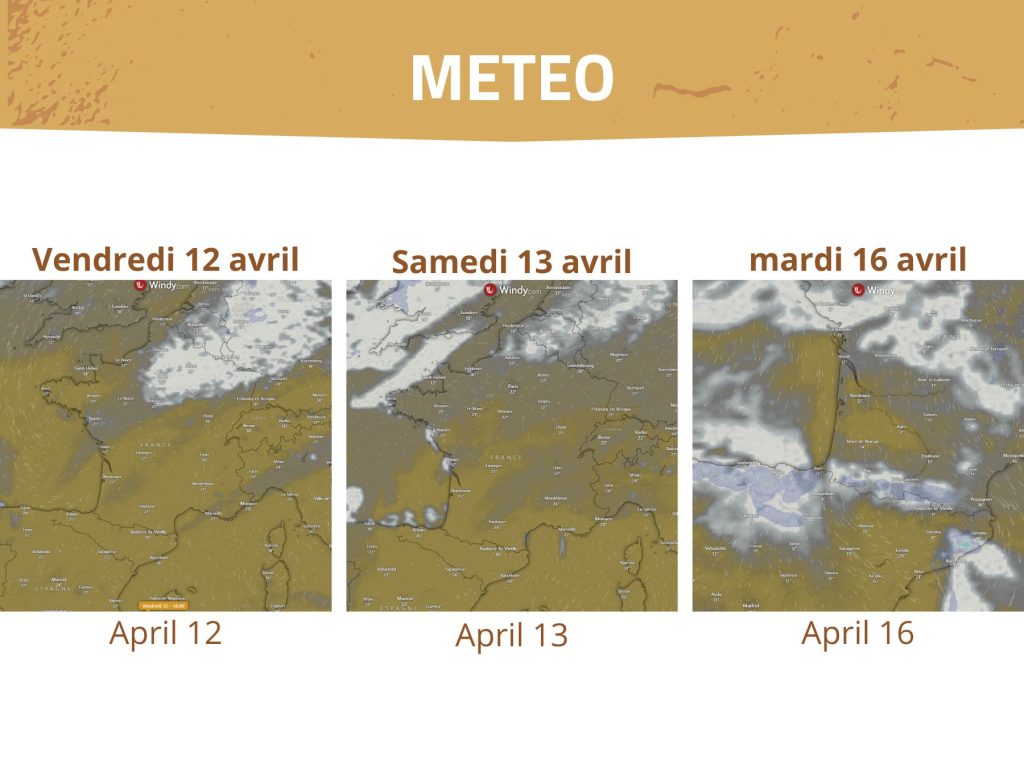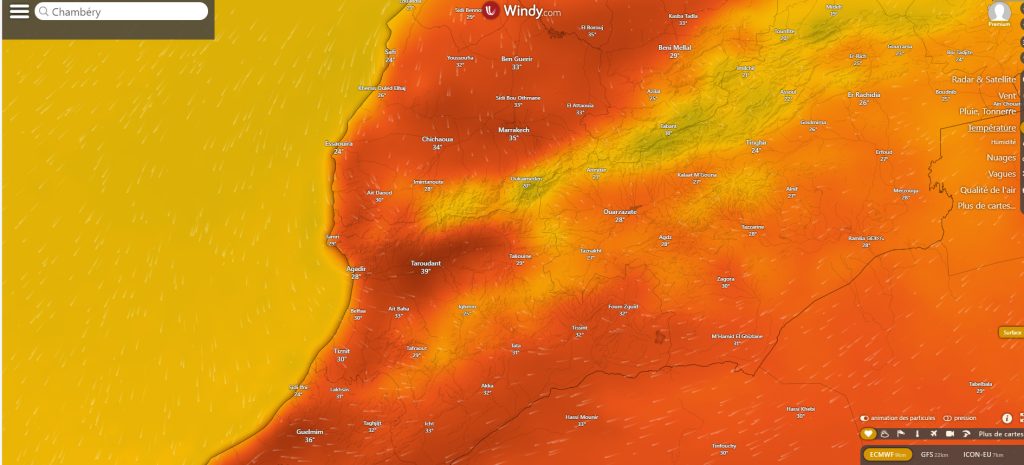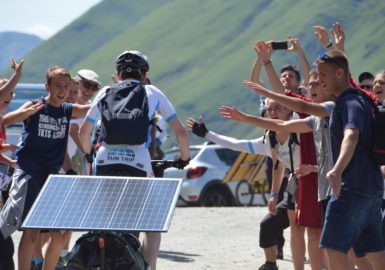[automatic translation with Deepl.com]
The departure date for Sun Trip 2024 was the subject of lengthy consideration during 2023. In the end, April 12 was chosen as the earliest start date in the history of the Sun Trip, to avoid the summer heat in southern Morocco. Since then, the inconvenience of this choice has haunted the minds of the organization and participants alike: will the sun be out for the first few days/weeks of the trip?
As far as the organizers were concerned, they took the precaution of starting indoors, in the huge atrium of the Région Auvergne-Rhône-Alpes in Lyon. As for the participants, some are analyzing the weather data in detail, while others are waiting until the last moment to get a reliable forecast.
But the majority of participants seem a little worried about this unprecedented departure of the Sun Trip in early spring. “It’s an extra difficulty, but it’s the same for everyone”. “Not only are Spain and Portugal rainy in April, but the anticyclonic Azores are pushing the wind against us all the way to Sidi Ifni“. These are just two of the reactions we got from our registrants, and they reflect the mood of the group.
With 5 days to go to the start, the weather forecasts look very favorable for the first few days of the race. A northerly wind should be pushing the adventurers towards the start, and the sun should dominate at least as far as the foot of the Pyrenees. Checkpoint #1, at the Col de la Pierre Saint Martin, may hold some surprises in store. The road is cleared of snow and open, but it certainly won’t be warm at the top of the pass, at an altitude of 1765 metres, and it’s not entirely impossible that the snow will return. Depending on the day, not everyone will have the same conditions on this difficult climb, and we can imagine that some will lose a little time crossing the Pyrenees…
Beyond the Spanish border, it’s difficult at the moment to get a clear picture of the weather forecast. The consequences of global warming could take the form of almost summer-like weather in Spain and Portugal, but nothing is written in advance and the road will be long to the Atlantic checkpoint, then to the Tarifa ferry leading to Tangiers in Morocco.
After entering Morocco, the sun should reign supreme, barring any fog along the ocean, but the natural sunshine will be less than on a Sun Trip organized in summer. The number of driving hours has been reduced to prevent participants from driving into the night. They will have to stop between 8:30 p.m. and 7 a.m. on the first part of the route, then between 8:30 p.m. and 6:30 a.m. from Morocco. That’s 1h30 to 1h less riding time per day compared with The Sun Trip Europe 2021 edition.
All this leads participants to adapt their route strategy. “Ride cool and push a little harder on the pedals. Choose a route without too many climbs. Stop early enough to keep a bit of autonomy the next morning. Find a route with not too much shade“, will be Jean-Louis Mérelle’s mantra. “Reducing speed and weight are two obvious levers. Carry more battery capacity. Carry more photovoltaics“, is the position of Richard Defay, also a novice on a major Sun Trip.
Experienced Czech rider Michael Polak has a slightly different view: “There’sno way to adapt, the solar bike needs sun, there’ll be less Wh, so that means fewer km. The youngest and most athletic participants will take the lead“.
Finally comes the question of race pace, with a double question that remains unanswered at this stage: will Sun Trip records fall on this 2024 edition? For the record, in 2021, the fastest riders averaged 330 km per day, with a daily record of 449 km! On the subject, Vincent Lauga seems to sum up the situation best: “Perhaps in Morocco the daily record may fall, but it doesn’t matter… the pleasure will be in discovering this route thanks to the solar bike“.
Let the adventure begin!
And for the record, here’s a view of the forecast temperatures in southern Maros on Wednesday April 10… (that’s why we’re leaving early…).







